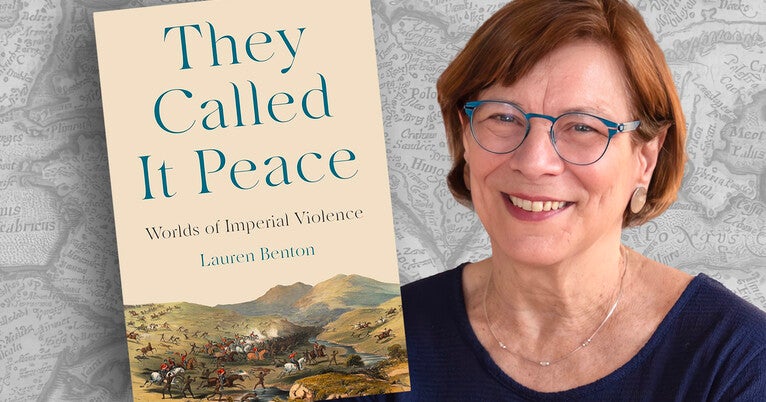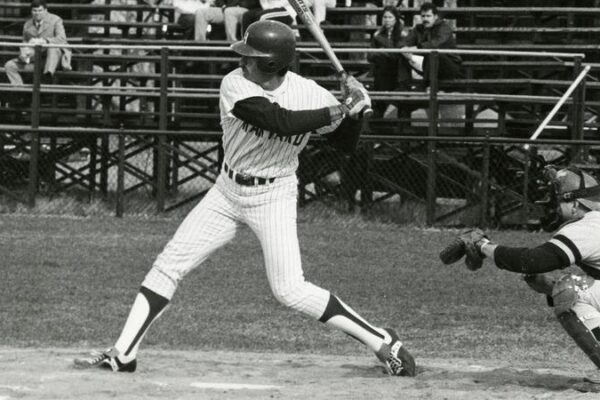‘Choreography of conquest’: How routine violence shaped European empires
Our understanding of global history tends to center on the major conflicts that caused the most widespread upheaval and loss of life. They include the two world wars and, further back in history, the Seven Years’ War, the Atlantic Revolutions, and the Napoleonic Wars.
In her new book, “They Called It Peace: Worlds of Imperial Violence” (Princeton University Press), Yale historian Lauren Benton looks at the periods between those well-studied markers to examine the imperial violence that took the form of rampant and seemingly incessant small wars. She finds that European empires consistently used what she calls a “choreography of conquest” to amass power over the 500-year period between 1400 and 1900.
There was a “rumbling on of raiding, counter raiding, plundering, and pillaging — long drives of conquest that occurred over centuries in many places,” she said. “For a lot of people on the planet, that was their experience of violence. Sometimes they were not even touched by major wars, but wherever they were they certainly knew something about how small wars were conducted.”
Benton, the Barton M. Biggs Professor of History in Yale’s Faculty of Arts and Sciences, is a world historian who focuses on global legal history and the history of European empires. She was the 2019 recipient of the Toynbee Prize, awarded biennially for work that makes a substantial contribution to the study of global history.
Benton sat down with Yale News to talk about the imperial regime of plunder, the temporary nature of truces, and present-day echoes from the imperial past.
Let’s start with the title of the book: “They Called It Peace.” What is that a reference to?
Lauren Benton: It refers to a famous quote from [the Roman historian] Tacitus: “Where they make a desert, they call it peace.” It’s often cited as a caustic assessment of the effects of empire on those who are conquered and ruled.
You show how the European empires of this era engaged in systematic raiding and captive-taking, what you call a “global regime of plunder.” Would you elaborate?
Benton: Europeans, although they were often tremendously violent in their campaigns of conquest, were at first not inventing new modes of imperial expansion. They were fitting into what were already globally recognized modes of making war and peace. The sequential serial raiding that they did in the course of conquest was familiar to everyone. The regime of plunder, although Europeans were awfully good at it and in fact took it to some new heights or depths, was actually a global way of doing small violence that was common across the world in many different regions.
Lauren Benton reads an excerpt from ‘They Called It Peace’
You write about Portuguese ventures into the Indian Ocean and British ventures into the Atlantic to seize goods and the enslaved from ships, seize ports, and establish garrisons. The next step, you found, was to encourage the establishment of households in these areas. Why was that critical?
Benton: I became very intrigued with households because I didn’t expect to find them mentioned in relation to war. It popped out of the sources. I was reading about where the Portuguese were raiding, and I found that a major official, the first viceroy in the east, Alfonso de Albuquerque, wrote page after page about marriage policy. I had to ask myself, why was Albuquerque so concerned with households?
It turns out that households were regarded as absolutely essential to justifications for making local war. A proliferation of households made it possible to say that you had a right to defend garrisons as settled colonies. And households were also vehicles for punishing war captives. A big myth of captivity in the early modern world was that all captives came from war. That certainly was not the case, but it was the story that captive takers and purchasers of captives told repeatedly because it was lawful to hold war captives. But there was hardly any state apparatus to hold captives. The way you held captives was in households. Albuquerque was very concerned about making households so they could serve as containers for captives, and as a way of holding manpower in garrisons so they could then conduct more raids. This same logic became important in many empires.
How did European thinking about their right to wage war shift in the 18th and 19th centuries?
Benton: It’s best to start with what I would call the standard story. Sometime in what historians like to call the “long 19th century” — from about the middle of the 18th century up to World War I — Europeans began to imagine a world of equal sovereign states. They crafted a balance of power in Europe that became the model for the international order. Along with that came the interstate regulation of warfare.
But I was fascinated to find that, first, the extra-European world was not by any stretch lawless or without routines. And also, Europeans began to exercise this muscle of asserting their right to make the laws of war in the context of little wars in European empires. Again, this was something that just popped out of the sources. I dipped into writings by participants in what was called the “Second Carnatic War” in South Asia to see what French and English company officials were writing about war. They didn’t have much power there and were just beginning to exercise influence. But I found them furiously lobbing letters back and forth about the laws of war. And this was before very important works were written in Europe that began to claim European authority over the laws of war.
It’s very interesting that these colonial small wars played such a central role in European imagination as they began to assert a more muscular claim to dominance over the laws of war.
Truces were routinely negotiated to halt the violence. But you found that they almost always guaranteed future war. Why was that?
Benton: Truces just signified a break from war. That is how jurists described them and that was how participants regarded them. If I had one “aha” moment in studying truces, it was reading about the series of truces in the lead-up to the conquest of Granada by the Catholic Monarchs [Isabella I of Castile and Ferdinand II of Aragon] in 1492. Over an almost 150-year period, there were an astonishing 74 truces, and the truces were not made to last. They sometimes were set to end in a fixed number of years. Sometimes they would end when one of the signers died. It was also possible for people to just say the other side broke a truce and now we’re on the warpath again.
And these truces didn’t make equal demands of both sides.
Benton: That’s correct. In fact, most truces recognized inequality. In the early modern world, tribute payments were very often attached to truces. And in the example I just gave from late medieval Iberia, surprisingly, the Granada ruler was stating that he was a vassal of the Christian monarchs when he signed truces. The important thing this history teaches us is that truce making was an irresistible mechanism for pausing war, but it also kept conflicts going for very long periods and facilitated conquest.
You write about a 19th-century phenomenon called “protection emergencies” and how they served to engender violence. Would you explain?
Benton: A lot of the small conflicts that occurred across the 19th-century imperial world involved violence that followed threats — real or perceived — or attacks on imperial subjects. This was a period of globalization of imperial militaries. Navies were on patrol over vast regions, and there were territorial armies activated that hadn’t existed before. As imperial armed forces were fanning out, the commanders and captains of these forces were charged very explicitly with protecting imperial subjects. And that meant that they carried standard authorization to make decisions about the use of force. They would make judgements about who was responsible for the threat to imperial subjects and then they would say, writing back to their superiors after the fact, “We had to use violence in order to protect these subjects.” These protection emergencies occurred in waves across the world. In settler colonies, they sometimes resolved into extended campaigns of imperial violence against Indigenous communities. And sometimes they led to bigger wars.
Toward the end of the book, you draw a parallel between that type of lower-level decision-making about violence — and how it can result in greater use of force — and the current day. The example you give is the loosening of rules about who has the authority to decide when and where to attack with predator drones under the Trump administration. How else is the imperial past showing up today?
Benton: Unfortunately, I think in a great many ways. Another example is the discourse that Putin used in describing the invasion of Ukraine. He claimed that the invasion was necessary to defend ethnic Russians, and for a full year he referred to the invasion as a “special military operation,” not a war. This is very imperial language. It shows up in other conflicts, too, where global powers describe violent interventions as necessary for self-defense or to regional order. These patterns of conflict show more continuity than discontinuity with the imperial past.













